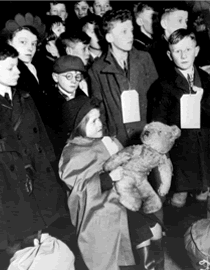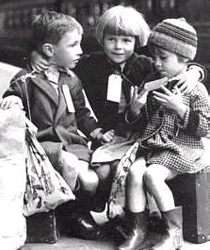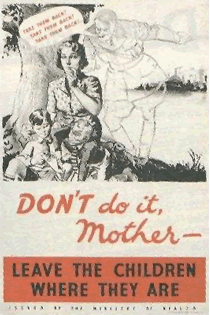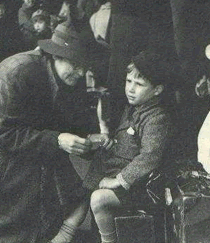



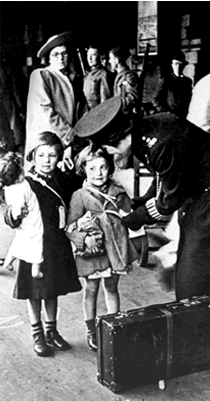

The Women’s Voluntary Service, formed in June 1938 with the aim of recruiting women to the Civil Defence Services, also took an interest in evacuation plans. County Evacuation Officers were appointed in every county likely to receive evacuees to organise their orderly dispersal.
The first evacuees from London left on 1 September 1939, two days before war was declared. Myrdale School had its pupils ready to go by 5.30am that morning. Many of those who left in the early days of the war had returned home by January 1940, as the anticipated raids had not come. This was during the so-called Phoney War when little seemed to be happening. The first major Blitz attack on London took place on 7 September 1940.
Bristol remained a neutral zone under the government
Evacuation Scheme until April 1941 and some of the London evacuees ended up in the city or the surrounding towns and villages of the West Country. They are described in the book West at War as ‘weary, grubby children dressed in cast-offs [who] descended on the astonished but willing countryfolk’. Some lacked basic hygiene skills, including toilet training, could not eat with a knife and fork or sleep in a bed, suffered from fleas, head lice, impetigo and scabies, and were badly malnourished: ‘their arrival was an eye-opener to the poverty that still existed in Britain’.
Before the whole city was declared an at-risk area, some
evacuations of local children from Bristol were organised
privately by families or under special Ministry of Health
sanctions. In February 1941, for example, over 6,000 Bristol children were sent to Devon from schools in the inner city and Avonmouth areas following bombing raids. During the course of the war more than 20,000 evacuees left the city, many going to rural Somerset and Cornwall. Mindful of the poor impression the London children had made, the Lord Mayor set up a fund to ensure that the Bristol children were sent away well dressed. As this was a voluntary evacuation scheme, some schools remained open in the city to teach those who did not leave.
From a book on the wartime experience of the people of Barton Hill (War on the Hill) comes this anecdote from a former evacuee:
We marched to Lawrence Hill station, waving our Union Jacks and singing ‘Roll Out the Barrel’. We had our bags with our belongings, gas marks, and we each had an identity label tied to our lapels. To take with us we were all given a bar of lovely smelling lux soap, and woolly cardigans sent by the people of Canada.
The following account is taken from West at War:
My parents were quite sad and upset but we were very, very pleased, war being a nasty thing and, I suppose, the tension of war was beginning to tell on us. The next morning we lined up with our labels and our gas masks and the coaches were there. The parents started to cry. I couldn’t understand why they cried because I thought they should be enjoying it like us. We all had sandwiches which disappeared before we got to Temple Meads station...
It was still daylight when we reached Clovelly and we saw the sea. But only the bottom deck [of the bus] was allowed off at Clovelly. We landed up at what I now know is Hartland in North Devon. We were herded into a hall – it was rather like a slave market. The bidders stood there and selected children... I was the last in the auction.
They walked me down a country lane to a house that was to be my home for the next 18 months. A policeman was there and when the lady came to the door, he said ‘This is Master Gerald Smith and he’s going to be your evacuee’. The lady looked at me with glaring eyes and said ‘I’m not having that scruffy little bugger here’. I remember it so clearly… it was a tragedy for me. I went into a house where I felt very much unwanted. I looked out of the window in the moonlight to see the sea glimmering some miles away. I thought, Gosh, I’ve gone across to America! I didn’t know where I was. They gave me a candle to go up to bed and I went to bed a very sorry and sad boy and cried the hours away.
The official order to return to Bristol came on 26 October 1944 but many children stayed on to finish their studies in their temporary homes.

